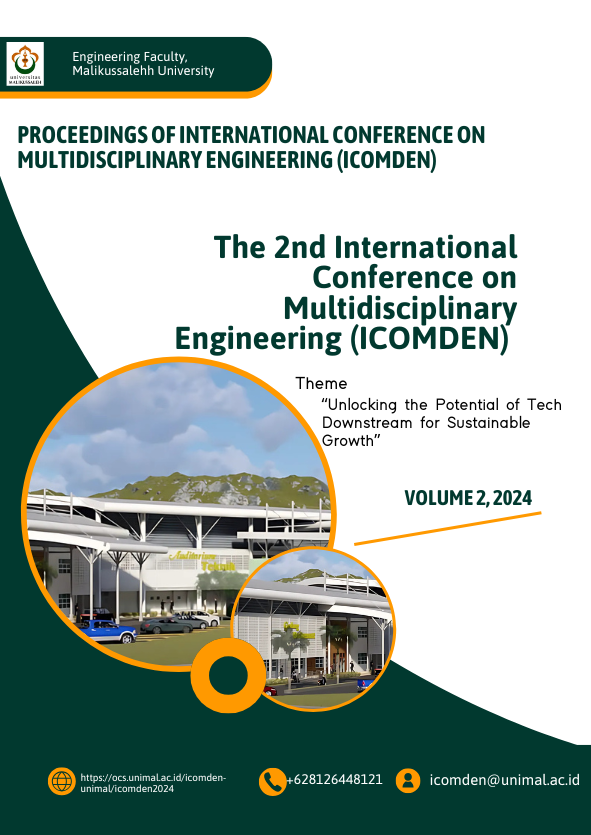Measuring the Software Quality of Government Website by Applying McCall Methods
Keywords:
Department of Communication and Information ekinerja application, ekinerja application, MccallAbstract
This study measures the quality of the eKinerja Application of the Communication and Informatics Service of Bener Meriah Regency after conducting a literature study, this study began by distributing questionnaires compiled based on the McCall method. The McCall method is one of the methods that can be used to measure software quality, then the results of filling out the questionnaire are tested for validity and reliability to obtain valid and reliable variables and indicators. In the test, there were 177 people who became respondents in this study. These variables and indicators are then used to measure the quality value (Fa) of each variable, the measurement begins with the process of weighting variables and indicators through questionnaires filled out by experts. The weighting uses a scale of 0.1 to 0.5 for each variable Correctness, Reliability, Efficiency, Integrity and Usability along with their respective indicators. The results of the McCall method calculation on the quality of the Bener Meriah Regency Communication and Informatics Service Performance Application show that the correctness quality factor gets a good category with a percentage result of 74% from the usability factor getting a result of 60% with a fairly good category, the integrity factor getting a result of 77% with a good category, from the reliability factor getting a result of 83% with a very good category from the efficiency factor getting a result of 46% with a bad category.
References
[1] Lima, B., Hughes, G.C., Lemaire, A., Jaggers, J., Glower, D.D., & Wolfe, W.G. (2006). Short-Term and Intermediate-Term Outcomes of Aortic Root Replacement with St. Jude Mechanical Conduits and Aortic Allografts. Annals of Thoracic Surgery, 82(2), 579–585. https://doi.org/10.1016/j.athoracsur.2006.03.068
[2] Luzyanina, T., Roose, D., & Bocharov, G. (2005). Numerical bifurcation analysis of immunological models with time delays. Journal of Computational and Applied Mathematics, 184(1), 165–176. https://doi.org/10.1016/j.cam.2004.08.019
[3] McCall, J. (2005). Genetic algorithms for modeling and optimization. Journal of Computational and Applied Mathematics, 184(1), 205–222. https://doi.org/10.1016/j.cam.2004.07.034
[4] Muhammad Al Agani, Rizal Munadi, & Muhammad Subianto. (2018). Evaluation of Academic Information System Performance Using IT Balanced Scorecard at Serambi Mekkah University, Banda Aceh. Upgris Informatics Journal, 4(1).
[5] Puspitasari, N., & Nisak, M. (2018). The Influence of Social Media on Social Relationship Patterns of Adolescents in the Digital Era. Khatulistiwa Journal of Education and Learning, 7(3).
[6] Putri, RO, Sopiah, N., Andri, & Sauda, S. (2023). Analysis of the Quality of the E-Office Atr/Bpn Website of Palembang City Using the Mccall Method. Betrik Scientific Journal, 0, 551–563.
[7] Rafa E. Al-Qutaish, P. (2010). Quality Models in Software Engineering Literature: An Analytical and Comparative Study. Journal of American Science, 6(3), 166–175. http://www.jofamericanscience.org/journals/am-sci/am0603/22_2208_Qutaish_am0603_166_175.pdf
[8] Sitorus, SA, & Malau, EP (2017). Hotel Reservation Information System at GM. Marsaringar Balige Based on Android. MEANS (Media Information Analysis and System), 91, 52–57. https://doi.org/10.54367/means.v2i1.24
[9] Terttiaavini. (2014). Analysis of Library Information System Implementation. Global Informatics Scientific Journal, 5(1), 7–15.
Downloads
Published
How to Cite
Issue
Section
License
Copyright (c) 2024 Megah Bensuniara, Rahma Fitria

This work is licensed under a Creative Commons Attribution-ShareAlike 4.0 International License.
Copyright Notice
Authors published in this journal agree to the following terms:
1. The copyright of each article is retained by the author (s).
2. The author grants the journal the first publication rights with the work simultaneously licensed under the Creative Commons Attribution License, allowing others to share the work with an acknowledgment of authorship and the initial publication in this journal.
3. Authors may enter into separate additional contractual agreements for the non-exclusive distribution of published journal versions of the work (for example, posting them to institutional repositories or publishing them in a book), with acknowledgment of their initial publication in this journal.
4. Authors are permitted and encouraged to post their work online (For example in the Institutional Repository or on their website) before and during the submission process, as this can lead to productive exchanges, as well as earlier and larger citations of published work.
5. Articles and all related material published are distributed under a Creative Commons Attribution-ShareAlike 4.0 International License.






